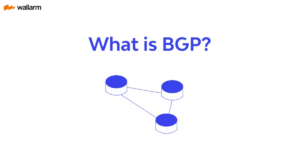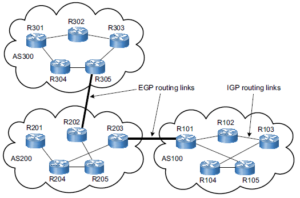IGP: Open Shortest Path First (OSPF) Overview
2 min readEIGRP already has what it takes to be the best IGP. However, there is a need for an open standard protocol with fast convergence and supports large enterprise networks. Here comes the Open Shortest Path First (OSPF). OSPF is a link-state routing protocol and uses Dijkstra’s algorithm (SPF) in finding the shortest path in the network. The OSPF process is a bit complex and understanding the algorithm itself is very intricate. I don’t want to elaborate on it piece by piece as I’m afraid if I’m going to be serious about understanding the formula of the algorithm, I might discover a new one that would replace OSPF. No, I’m just joking.
Going back, OSPF generates a link-state advertisement (LSA) when there is a change in routing information or upon the initial process. LSA is the OSPF medium used for communicating the router’s local routing and topology information to all other local routers in the same OSPF area. LSA, in short, is the packet itself used for the exchange of information. There are actually many types of OSPF LSAs, (like Router LSA, Network LSA, etc) and we will dig into that in my next post. The exchange of LSAs is flooded on each router. Once received, the routers should keep a copy of it in their link-state database (LSDB). Then LSA acknowledgement (LSAck) is sent. After this, the link-state update (LSU), which contains one or more LSAs is propagated to other routers. LSU is also a reply from a link-state request (LSR) when there is a request that a specific router does not have the new LSA. After the database of each router is synched, the router uses the Dijkstra algorithm to calculate the best routes.
Unlike RIP, OSPF does not send updates periodically. It only sends updates (like a change in the cost of a link or a network being added/deleted) when there is a change. This behavior is the same with EIGRP. In case no changes occur in the OSPF network, OSPF should stay quiet. The process begins again once a new LSA arrives on the router.
OSPF RELATED TOPICS:
- OSPF Packet Header Format
- OSPF Metrics
- The OSPF Neighbor Table
- The OSPF Topology Table
- The OSPF Routing Table
- OSPF Hello Packets
- OSPF LSA Types
- OSPF Area Types
- OSPF Messages
- OSPF Neighbor Adjacency States
- OSPF Neighbor Adjacency Requirements
- OSPF Network Types
- OSPF DR And BDR Election
- OSPF Show Commands
OSPF CONFIGURATION / LABS
- OSPF Virtual Link
- OSPF Stub Area
- OSPF Totally Stubby Area
- OSPF Not-So-Stubby Area (NSSA)
- OSPF Totally Not-So-Stubby Area (NSSA)
- Redistribution Between RIP And OSPF
- Redistribution Between EIGRP And OSPF
- OSPF Authentication
- OSPF Network Advertisement
- OSPF Equal Path Cost Load Balancing
- Changing OSPF Administrative Distance






